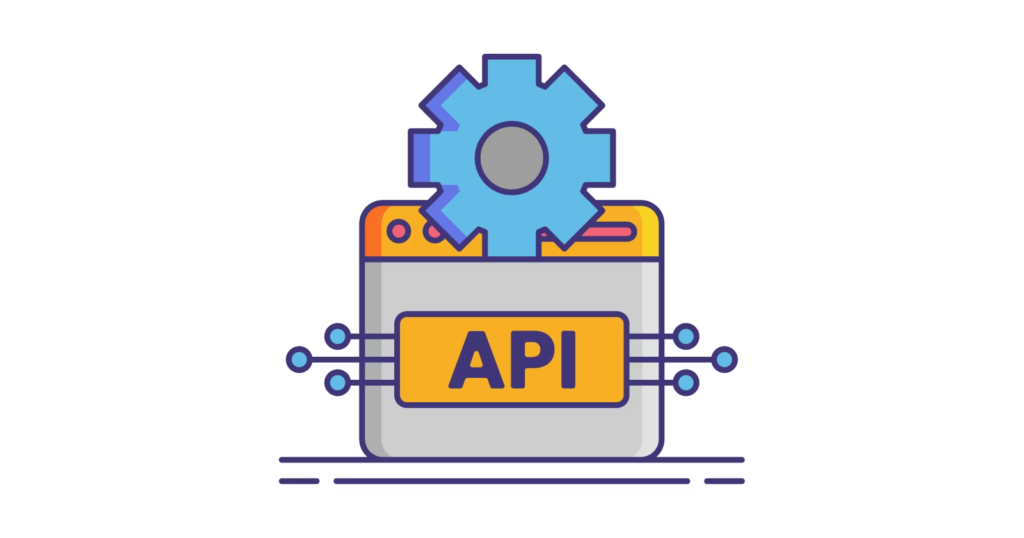In the ever-evolving world of mobile app development, businesses are constantly striving to provide users with more functionality, better user experiences, and seamless interactions. One powerful way to achieve this is by integrating APIs (Application Programming Interfaces) into your mobile application. Whether you’re building a native app or a hybrid mobile app, incorporating APIs can significantly enhance your app’s features, speed, and overall performance.
In this article, we will explore the role of APIs in mobile app development, the benefits they bring, how to integrate them effectively, and why choosing the right mobile app development company in Canada, like Devherds, can be a game-changer for your business.
What Are APIs and Why Are They Important?

Before diving into how APIs can enhance your mobile app, it’s important to understand what APIs are. An API is a set of rules and protocols that allows different software applications to communicate with each other. In simpler terms, APIs enable your mobile app to interact with external systems, services, or databases.
For example, if you are developing a travel app and want to provide users with real-time flight data, you would integrate an API that connects your app to an external flight data provider. This integration allows your app to fetch and display updated flight information without having to build the entire system from scratch.
Key Benefits of Using APIs in Mobile App Development

- Enhanced Functionality: APIs allow you to add new features to your app without having to reinvent the wheel. By leveraging third-party APIs, you can easily integrate payment systems, geolocation services, social media sharing, and much more.
- Faster Development: Building an app from the ground up can be time-consuming. By using APIs, you can save time by connecting to existing services, thus accelerating the development process. This is particularly useful for businesses that need to launch quickly.
- Improved User Experience: APIs can help create smoother and more efficient user experiences. For example, integrating APIs that provide instant messaging, push notifications, or location-based services can significantly improve how users interact with your app.
- Cost-Effective: Developing all functionalities from scratch can be expensive. APIs offer a cost-effective solution by enabling you to leverage existing services, reducing both development time and costs.
- Scalability: APIs help your app scale with ease. As your app grows and you need more functionality, you can simply integrate more APIs instead of redesigning your app. This scalability is key to supporting the future needs of your app.
Types of APIs Used in Mobile Application Development
When it comes to mobile application development in Canada, APIs come in various types, and selecting the right one depends on the functionality you want to add to your app. Below are the most common types of APIs used in mobile apps:
1. Web APIs
Web APIs, or HTTP APIs, are among the most commonly used APIs in mobile apps. They allow your app to interact with web servers over the internet. Web APIs are used for functions like retrieving data from databases, integrating external services, and fetching content from third-party platforms like social media or news websites.
2. Payment APIs
If you plan to include payment features in your mobile app, payment APIs are essential. These APIs allow your app to process transactions securely by connecting to payment gateways like PayPal, Stripe, or Square. Payment APIs are often used in e-commerce apps, subscription-based services, or apps that require in-app purchases.
3. Location-Based APIs
For mobile apps that require geolocation services, location-based APIs are crucial. They provide access to GPS and mapping data, allowing you to integrate features like location tracking, route planning, and nearby recommendations. Popular APIs for geolocation include Google Maps API and Mapbox.
4. Social Media APIs
Integrating social media functionalities can enhance your app by allowing users to log in using their social media accounts, share content, or view feeds. Social media APIs like Facebook SDK, Twitter API, and Instagram API are often used in apps to increase user engagement and social interaction.
5. Cloud Storage APIs
Cloud storage APIs enable your app to store and retrieve data from cloud-based storage solutions like Amazon S3, Google Drive, or Dropbox. These APIs help manage large volumes of data and provide users with the ability to back up or share files directly from your app.
6. Authentication APIs
To enhance the security of your app, integrating authentication APIs can help you implement user verification features. OAuth and Firebase Authentication are popular APIs for adding secure sign-in functionality, including multi-factor authentication and biometric login options.
How to Integrate APIs into Your Mobile App

Now that you understand the benefits and types of APIs, let’s take a look at how to integrate them into your mobile application.
Step 1: Identify Your Needs and Choose the Right API
Before integrating an API, you must first identify the features or services you want to add to your app. Consider what kind of external functionality will best enhance your app’s user experience. Once you know your requirements, research available APIs to find the one that suits your needs.
For instance, if your app requires real-time data, you may want to choose an API that offers low latency and quick response times. Additionally, ensure that the API you choose is well-documented and actively supported to avoid potential integration issues in the future.
Step 2: Obtain API Keys
Most APIs require you to sign up for an API key or access token. This key is essential for authenticating your app when making requests to the API server. Once you obtain the key, securely store it within your app’s code, ensuring that it is not exposed to unauthorized users.
Step 3: Implement API Calls
The next step is to integrate the API calls into your app’s code. API calls typically involve sending HTTP requests to the API endpoint and receiving data in response. In mobile app development, libraries such as Retrofit for Android or Alamofire for iOS are commonly used to handle API requests and responses.
Step 4: Handle Responses
Once you make the API call, you will receive data in a specific format, such as JSON or XML. Your app needs to parse this data and present it to the user in an understandable format. This step may involve processing the data, filtering out irrelevant information, and displaying it within the app’s UI.
Step 5: Test and Optimize
After successfully integrating the API, conduct thorough testing to ensure that the API integration works seamlessly. Test for edge cases, slow responses, and potential security vulnerabilities. Optimize the API calls to reduce load times and ensure a smooth user experience.
Step 6: Monitor API Usage
Once your app is live, monitor the API usage to ensure it continues to work as expected. Most API providers offer dashboards to track API requests, monitor performance, and identify potential issues.
Why Choose Devherds: The Best Mobile App Development Company in Canada

When it comes to mobile app development in Canada, partnering with a top mobile app development company can make all the difference. Devherds, a leading mobile app development company in Canada, specializes in creating custom mobile applications that seamlessly integrate APIs for enhanced functionality.
Why Devherds Stands Out
- Expert Developers: Devherds employs highly skilled mobile app developers in Canada with deep expertise in API integration, ensuring that your app’s functionality is both reliable and efficient.
- Tailored Solutions: Every business is unique, and Devherds offers personalized mobile application development services in Canada, designing apps that align perfectly with your business needs.
- Scalability and Flexibility: Devherds excels in creating mobile apps that can grow with your business. Whether you need to add new features or integrate additional APIs in the future, Devherds ensures that your app remains scalable and adaptable.
- Proven Track Record: As a top mobile app development company in Canada, Devherds has a proven track record of successfully delivering projects that enhance user engagement and drive business growth.
- Comprehensive Services: From initial app concept design to post-launch support, Devherds offers end-to-end mobile app development services in Canada. They also ensure smooth API integration to improve your app’s overall functionality.
Devherds’ Expertise in API Integration
Devherds is known for its proficiency in integrating APIs into mobile apps, allowing businesses to unlock new functionalities. Whether you need to integrate payment gateways, location-based services, or social media platforms, Devherds ensures that your API integrations are seamless, secure, and optimized for performance.
Conclusion
Integrating APIs into your mobile app is a powerful way to enhance functionality, improve user experience, and save development time. By leveraging the power of APIs, you can add a wide range of features to your app without having to build everything from scratch. Whether you’re developing a simple app or a complex enterprise solution, APIs play a crucial role in extending your app’s capabilities.
For businesses in Canada looking for reliable and expert mobile app development services, Devherds is your go-to partner. As the best mobile app development company in Canada, Devherds excels in building mobile applications that integrate seamlessly with external APIs, providing you with the flexibility and functionality your users demand.
If you’re ready to enhance your app with cutting-edge API integrations, contact Devherds today to get started on your mobile app development journey.

